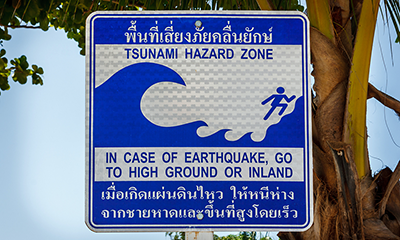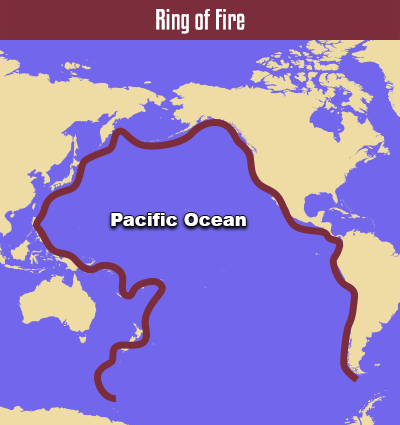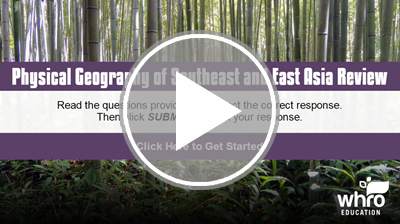Physical Geography of Southeast and East Asia
Physical Features of Southeast Asia and East Asia
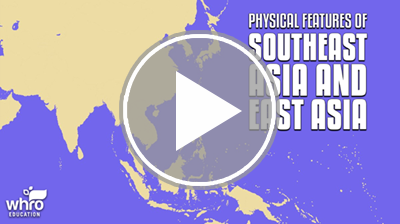
Southeast Asia and East Asia are geographic regions located on the Asian continent. This region spans a large part of the mainland and thousands of islands off the coast. In this interactivity, you will learn about the physical features of Southeast and East Asia. As you explore, consider how the physical geography influences the climate, as well as human settlement. Click the player to begin.
View a printable version of this interactivity or an ADA compliant transcript.
Climate Regions
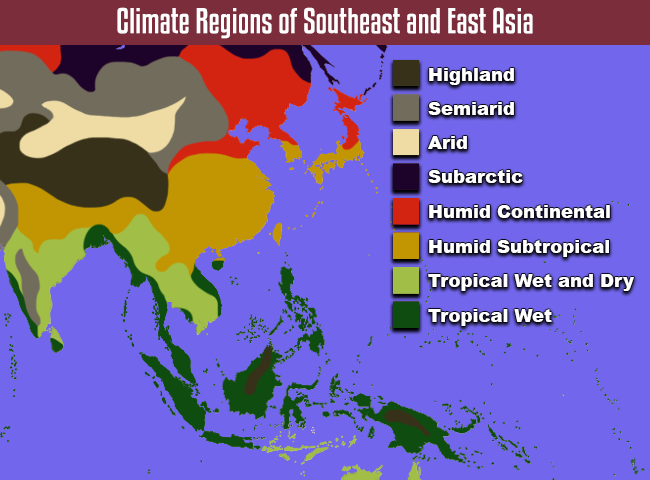
There are many different low and middle latitude climate regions in Southeast and East Asia. Southeast Asia is located along the equator. Because of this, it has a mostly tropical climate. Tropical wet climate regions can be found on most of the islands of Maritime Southeast Asia. This type is climate is also found along the coasts of Mainland Southeast Asia. The climate shifts to tropical wet and dry farther inland.
East Asia contains mostly middle latitude climate regions. Humid subtropical and humid continental climates span much of the region near the coast. The humid subtropical climate starts near the coast of the South China Sea. It shifts to a humid continental climate farther north, near the coast of the Yellow Sea. These two climate regions are also found in Taiwan and Japan.
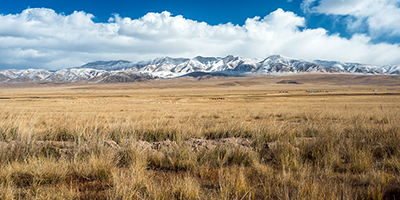
Semiarid steppe on the Plateau of Tibet
The Himalayas and the Plateau of Tibet both have highland climates. This climate type can vary based on the altitude. For instance, the foothills may have a temperate climate with dense forest, while the peak is covered with snow and ice. The climate north of the Tibetan Plateau is arid and semiarid. This is because the Himalayas and the Tibetan Plateau create a large rain shadow. Air cools and loses moisture as it blows up the mountains. When the air finally crosses the plateau, it is very cold and dry.

